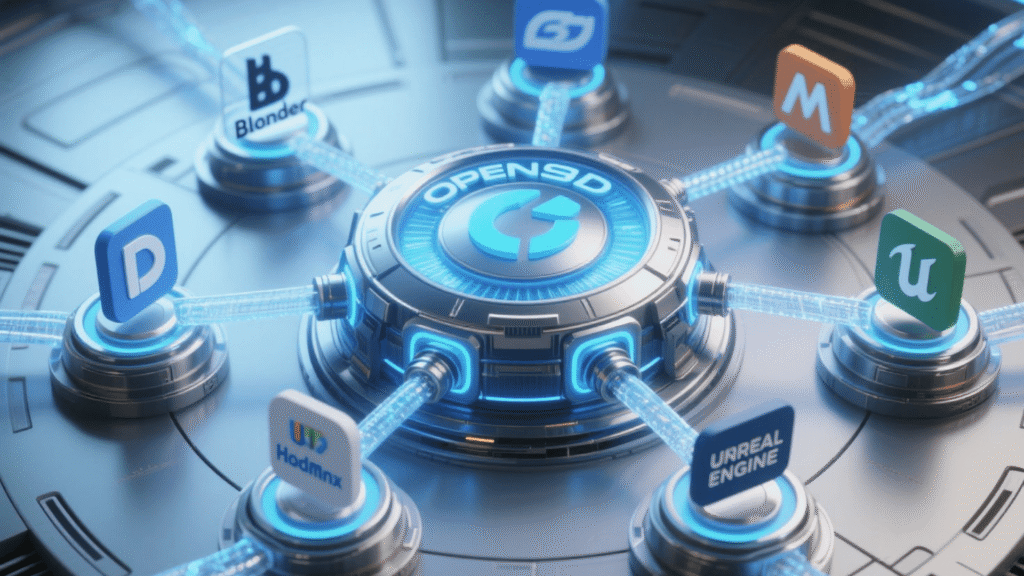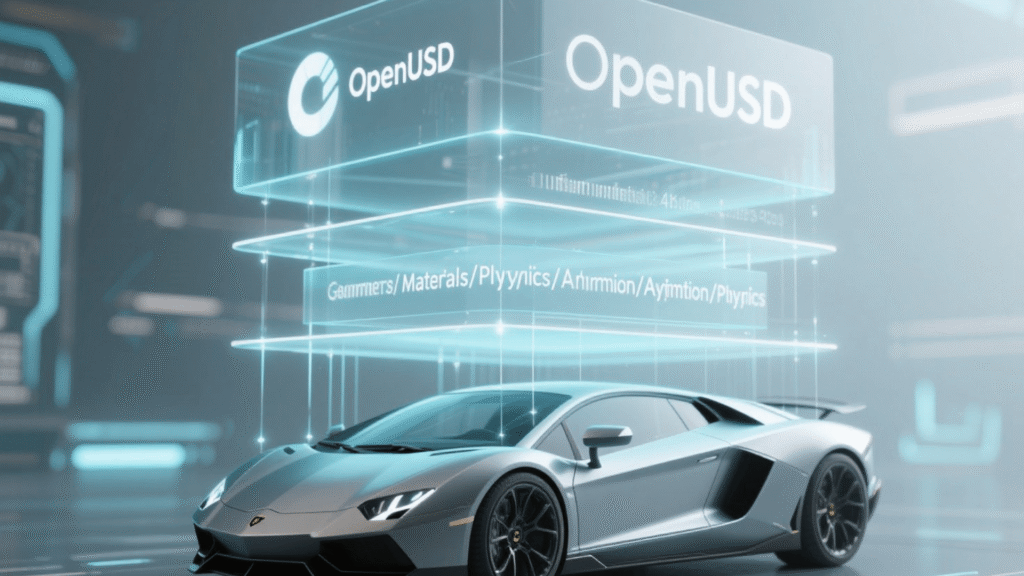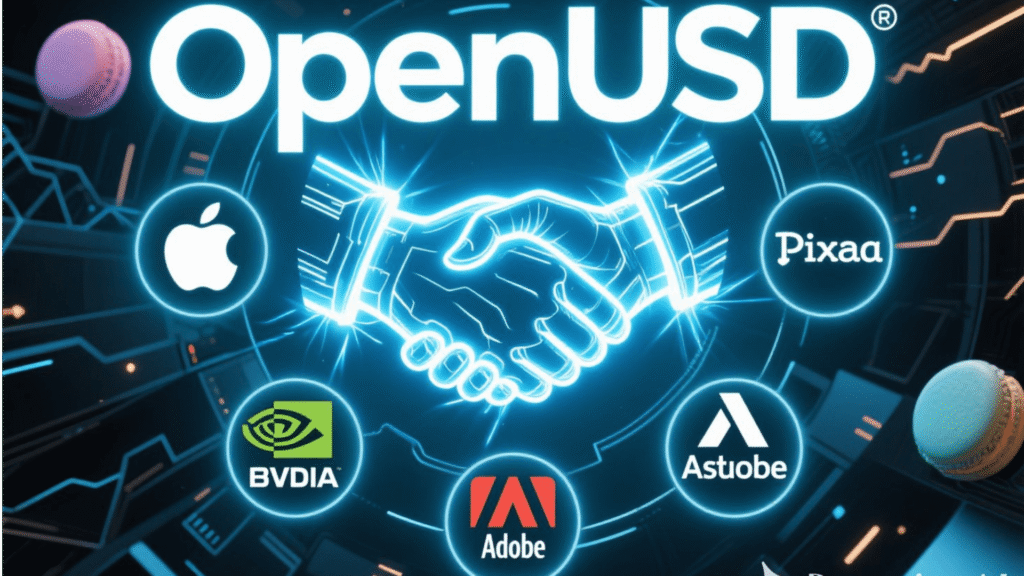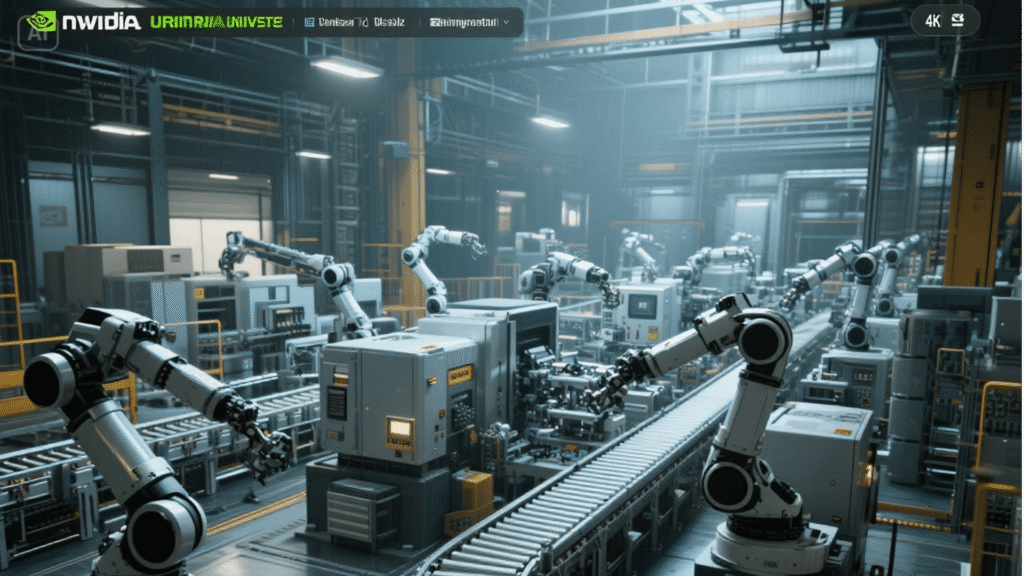The Revolutionary Tech Powering the Future of the 3D Internet: An OpenUSD Guide
Alright, picture the internet back before JPEGs showed up. It was all words—no memes, no cat pics, just a wall of text. The arrival of a simple image format rewired everything. Now, we’re staring down the barrel of a new revolution for 3D, and the magic word behind it is OpenUSD. This is the not-so-secret sauce quietly becoming the foundation of the future 3D internet.
You’ve probably caught wind of “Spatial Computing” and the “Metaverse” lately—thanks, Apple Vision Pro commercials. But here’s the thing nobody says out loud: making cool 3D stuff for the web is a hot mess. Every piece of 3D software talks its own language. Imagine building a skyscraper where the plans are in German, the wiring guide’s in Japanese, and the plumbing’s in Portuguese. Total chaos.
“NVIDIA explains in just a few minutes why OpenUSD is becoming essential to the future of 3D. The video below provides a quick and objective overview—and shortly after, in the article, you’ll find the full analysis, with practical examples and implications for creators and businesses.”
Fonte: NVIDIA Omniverse
This guide is your official translator. We’re going to break down what OpenUSD is without the soul-crushing jargon. It’s the universal language that Pixar cooked up, and now Apple, Nvidia, and every other tech giant are jumping in. By the time you’re done here, you’ll get why this tech is as big a deal as HTML was and how it’s about to change everything.
What is OpenUSD? Universal Scene Description Explained
Let’s just drop the tech lingo for a sec. OpenUSD (Universal Scene Description) isn’t some sparkly 3D file you download. It’s not another app hogging space on your laptop. Nah, it’s more like… blueprints for the digital universe.
A house blueprint doesn’t build the house; it just tells everyone where to do their thing. OpenUSD does the same, but for virtual worlds. It maps out where the car is parked, where the sunset goes, and where the camera is spying from. It even tracks if that car’s rocking a snazzy paint job or looks like it’s been through a carwash apocalypse.
But here’s where it gets cool: The technology lets everybody work on the same project, even if they’re using totally different tools. No digital fistfights—just straight-up creativity, zero chaos.

The Secret Sauce: “Non-Destructive” Composition
The secret sauce is composition. Think about stacking layers in Photoshop or scrolling through edit history in Google Docs. You can tweak things, add stuff, and undo oopsies without wrecking the original idea. That’s its vibe. It lets artists pile on changes without messing up the core scene. They call it non-destructive, and it’s like collaborative art with way fewer meltdowns.

A director can flick layers on and off like a DJ mixing tracks: “Let’s see nighttime with the blue car. No, wait—midday, red car, action!” Nobody’s work gets trashed. That’s how hundreds of people build a Pixar movie without chaos. (Source: Pixar’s Official USD Documentation)
Why OpenUSD is Exploding Now: The Perfect Storm
So, why is this standard blowing up right now? Simple—three big trends crashed together at the perfect moment.
1. Hardware Finally Grew Up (About Time)
Making 3D anything used to mean selling your soul to Hollywood render farms. Now, your PS5 has more muscle than a 90s supercomputer. And with spatial computing devices like the Apple Vision Pro, the hardware is finally ready to smash the digital and real worlds together.
2. The Tech Titans’ Secret Handshake (AOUSD)
In 2023, the tech powerhouses—Apple, Nvidia, Pixar, Adobe, Autodesk—formed the Alliance for OpenUSD (AOUSD). This isn’t just a nerdy club; this is the standard now. When you see Apple and Nvidia playing nice, you know it’s serious. It’s like they all finally agreed to speak the same digital language. (Source: Official Alliance for OpenUSD Website)

3. Digital Twins: Not Just Sci-Fi Anymore
“Digital twins” aren’t just a buzzword. Picture BMW building a pixel-perfect virtual copy of a factory. They tweak robots and shuffle assembly lines in the metaverse, with no real bolts or bruised thumbs. Platforms like Nvidia Omniverse (built on OpenUSD) are making it happen. This proved OpenUSD isn’t just for movies—it’s changing how real factories run. (This connects directly to how Autonomous AI Agents are revolutionizing other industries.)
OpenUSD in Action: Real-World Examples
This isn’t some pie-in-the-sky dream—OpenUSD is already shaking things up. Let’s dive into some real examples.
Example 1: Cinema – The Films of Pixar
In “Elemental,” the city is a character. One artist geeks out on water splashes, another fiddles with firelight on glass, and a third animates the crowd. OpenUSD is the magic glue that keeps all these random chunks—built in different apps—playing nice together for the final shot. Without it, those crazy-detailed Pixar movies would be a logistical nightmare.
Example 2: Industry – BMW’s Digital Twin with Nvidia Omniverse
BMW built a full-on digital twin of a new factory in Nvidia Omniverse, using OpenUSD as the backbone. They ran the whole operation virtually, spotting dumb bottlenecks and fixing headaches before construction even started. The result? They saved a boatload of cash and months of time. (And yeah, Nvidia blogged all about it.)

Example 3: The Consumer – Apple’s Spatial Computing
If you’ve got a newish iPhone, you’ve probably bumped into OpenUSD. When you point your phone to see how that IKEA sofa would look, that’s 3D scene magic. Apple jumped on the OpenUSD train (specifically the .usdz format) and made it the go-to for 3D stuff. With visionOS (the brains for Vision Pro), OpenUSD is right at the center, letting devs cook up wild spatial apps that just work.
What OpenUSD Means for the Future (And for You)
- For Creators: Say goodbye to the dumpster fire of 3D file incompatibility. It’s the easy, plug-and-play vibe of the 2D web, but for 3D. About time.
- For Businesses: This is where the magic starts. We’re talking virtual try-ons that actually fit, spinning a car around in 3D before you buy, and AR instruction manuals. OpenUSD makes these “digital products” play nice together.
- For Everyone Else: Here’s the dream—a 3D internet that’s open, not chopped up into Metaverse fiefdoms. OpenUSD is the key that could let these worlds actually connect, like a web you can wander around in.
(Honestly, the future of automation with AI Agents and the way we’ll interact using OpenUSD? They’re two sides of the same wild, spinning coin.)
Conclusion: The Future’s Foundation is Getting Poured, Right Now
OpenUSD might not be a household name (yet), but neither is TCP/IP, and we run the entire internet on that stuff. It’s the invisible backbone for tomorrow’s web. Shrugging at it now is like ignoring HTML in the ’90s—you didn’t need to code a website to realize the world was about to flip upside down.
OpenUSD is the HTML for the 3D web. Much like Generative AI is creating new content, this standard is quietly setting the rules for the next digital era.The future’s getting built brick by brick, and those bricks are stamped “OpenUSD.”
Do I have to fork over cash to use OpenUSD?
Nope! It’s open source, so you can grab it, tweak it, break it, and stuff it into your own projects for free. No paywalls, no weird licensing traps. Go wild.
Will OpenUSD replace game engines like Unreal Engine or Unity?
Come on, nobody’s losing sleep over OpenUSD taking over. Unreal and Unity? Still living their best lives, not even fazed. Honestly, OpenUSD is more like that super-helpful neighbor who brings over extra snacks, not someone plotting a takeover. It just shows up to make sure your 3D files don’t implode when you bounce them between different programs. No one’s getting replaced—it’s just damage control for all the chaos. Makes things way less painful, trust me.
Enjoyed This Deep Dive?
Stay ahead of the curve. Subscribe to our newsletter for more no-nonsense guides on the tech that’s actually shaping our future.
Newsletter coming soon!







